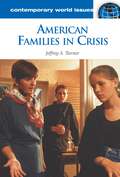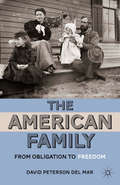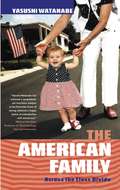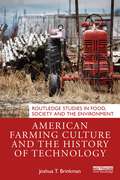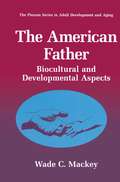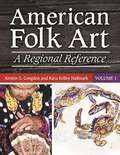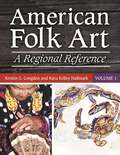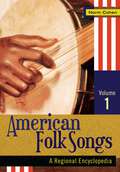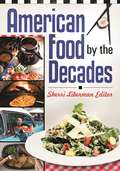- Table View
- List View
American Exceptionalism in Crime and Punishment
Across the U.S., there was an explosion of severity in nearly every form of governmental response to crime from the 1970s through the 2000s. This book examines the typically ignored forms punishment in America beyond incarceration and capital punishment to include probation and parole supervision rates-and revocation rates, an ever-growing list of economic penalties imposed on offenders, and a web of collateral consequences of conviction unimaginable just decades ago. Across these domains, American punitiveness exceeds that in other developed democracies-where measurable, by factors of five-to-ten. In some respects, such as rates of incarceration and (perhaps) correctional supervision, the U.S. is the world "leader." Looking to Europe and other English-speaking countries, the book's contributors shed new light on America's outlier status, and examine its causes. One causal theory examined in detail is that the U.S. has been exceptional not just in penal severity since the 1970s, but also in its high rates of high rates of homicide and other serious violent crimes. With leading researchers from many fields and national perspectives, American Exceptionalism in Crime and Punishment shows that the largest problems of crime and justice cannot be brought into focus from the vantage point of any one jurisdiction. Looking cross-nationally, the book addresses what it would take for America to rejoin the mainstream of the Western world in its uses of criminal penalties.
The American Experience with Alcohol: Contrasting Cultural Perspectives
by G. M. Ames L. A. BennettThis volume is an important contribution to our understanding of culture and alcohol in the United States. Its appearance is also a milestone in the history of alcohol studies in American anthropology. Over the last six years, the volume's editors, initially along with Miriam Rodin, have served as the coorganizers of the Alcohol and Drug Study Group of the American Anthropological Association (AAA). In this capacity, they have organized sessions at the AAA and other meetings, greatly strengthened the research network with a regular and informative newsletter, and painstakingly promoted the publication of anthropological work on al cohol and drugs. Appearing just as the responsibility for the Study Group is passed on to others, this book is a fitting emblem of the care and energy with which its editors have built an institutional nexus for alcohol and drug anthropology in North America. The contents of this volume offer a uniquely wide sampling of the diversity of cultural patterns that make up the American experience with alcohol. The collective portrait the editors have assembled extends in several dimensions: through time and history, across such social differ entiations as gender, age-grade, and social class, and through such major social institutions as the church and the family. Clearly the dominant dimension of variation in the material that follows, however, is ethnicity. The book offers us a sampler of unprecedented richness of the different experiences with alcohol of American ethnoreligious groups.
American Families and the Future: Analyses of Possible Destinies
by Roma S Hanks Marvin B Sussman Barbara H SettlesAs the world heads into the twenty-first century, individuals and their families are being confronted with a more diverse array of possible life experiences than has ever existed before. Changes in longevity, marriage, fertility, employment, and many other areas have created new opportunities for individual and family choice and variability in life course experiences. American Families and the Future discusses a variety of issues that face and will continue to families in coming years and describes various strategies families can use in their decisionmaking processes.This enlightening book is divided into five main sections: Demographic Issues; Social and Economic Issues; Technological Issues; Family Process in Shaping the Future; and Family Vision in Creating the Future. Individual chapters view family problem solving from a variety of perspectives and disciplines.American Families and the Future: describes recent demographic trends and considers their implications for how individuals and their families plan and prepare for their later adult life reviews health care issues and concerns for the elderly and addresses strategies for self-health promotion and illness prevention provides examples illustrating the uses and abuses of data to promote partisan views and agendas outlines a conceptual framework that can be uses to understand problem solving and decisionmaking by individuals and family groups presents a model that explores family decisionmaking, focusing on the conditions under which decisions are made presents findings from a study of early adolescents’perceptions of their role in family decisionmakingThe book closes with an upbeat discussion of possible solutions to current pathologies affecting human societies and cultures. Professionals who work with families will find this book an enlightening and encouraging guide for helping families cope with the myriad issues and choices they face in planning for their futures.
American Families and the Future: Analyses of Possible Destinies
by Roma S Hanks Marvin B Sussman Barbara H SettlesAs the world heads into the twenty-first century, individuals and their families are being confronted with a more diverse array of possible life experiences than has ever existed before. Changes in longevity, marriage, fertility, employment, and many other areas have created new opportunities for individual and family choice and variability in life course experiences. American Families and the Future discusses a variety of issues that face and will continue to families in coming years and describes various strategies families can use in their decisionmaking processes.This enlightening book is divided into five main sections: Demographic Issues; Social and Economic Issues; Technological Issues; Family Process in Shaping the Future; and Family Vision in Creating the Future. Individual chapters view family problem solving from a variety of perspectives and disciplines.American Families and the Future: describes recent demographic trends and considers their implications for how individuals and their families plan and prepare for their later adult life reviews health care issues and concerns for the elderly and addresses strategies for self-health promotion and illness prevention provides examples illustrating the uses and abuses of data to promote partisan views and agendas outlines a conceptual framework that can be uses to understand problem solving and decisionmaking by individuals and family groups presents a model that explores family decisionmaking, focusing on the conditions under which decisions are made presents findings from a study of early adolescents’perceptions of their role in family decisionmakingThe book closes with an upbeat discussion of possible solutions to current pathologies affecting human societies and cultures. Professionals who work with families will find this book an enlightening and encouraging guide for helping families cope with the myriad issues and choices they face in planning for their futures.
American Families in Crisis: A Reference Handbook (Contemporary World Issues)
by Jeffrey S. TurnerAn authoritative reference that helps general readers understand the varieties of crises impacting modern-day families and the intervention techniques designed to resolve them.An urgent, authoritative resource, American Families in Crisis spans the full spectrum of events and conditions that endanger families, offering the latest research and insights while evaluating current strategies and techniques for dealing with challenging family behaviors.The handbook begins by analyzing the history of family crises in the United States, then looks at how to identify, prevent, and respond to specific problems—everything from marital strife, teen runaways, and unemployment to school shootings, natural disasters, problems created by the Internet, and extended military deployment. The coverage is backed by hundreds of current key reference sources, plus chapters on notable contributors to the field, important data and documents, and resources for further information.
American Families in Crisis: A Reference Handbook (Contemporary World Issues)
by Jeffrey S. TurnerAn authoritative reference that helps general readers understand the varieties of crises impacting modern-day families and the intervention techniques designed to resolve them.An urgent, authoritative resource, American Families in Crisis spans the full spectrum of events and conditions that endanger families, offering the latest research and insights while evaluating current strategies and techniques for dealing with challenging family behaviors.The handbook begins by analyzing the history of family crises in the United States, then looks at how to identify, prevent, and respond to specific problems—everything from marital strife, teen runaways, and unemployment to school shootings, natural disasters, problems created by the Internet, and extended military deployment. The coverage is backed by hundreds of current key reference sources, plus chapters on notable contributors to the field, important data and documents, and resources for further information.
The American Family: From Obligation to Freedom
by David Peterson del MarTraces the movement from mutualism to individualism in the context of American family life. Families survived or even flourished during colonization, Revolution, slavery, immigration and economic upheaval. In the past century, prosperity created a culture devoted to pleasure and individual fulfilment.
The American Family: Across the Class Divide
by Yasushi WatanabeWhite, middle-class Americans are one of the most understudied groups in the anthropology of the United States – perhaps because of their hegemonic presence in society. This book offers the first ethnography of 'white middle-class America' from a non-native perspective. *BR**BR*Yasushi Watanabe, a Japanese anthropologist, examines two social groups in the Boston area to reveal an intimate portrait of the 'American' family. These two groups are at opposite ends of the social spectrum in terms of religious, ethnic and class backgrounds, and in terms of cultural tastes and lifestyles. The first group is upper-middle class, Anglo Saxon, Protestant, mostly Unitarian or Episcopalian - often identified as archetypical middle-class America. This is a wealthy group that includes descendants of the 'Boston Brahmins', one of America's oldest aristocratic families, closely related to Democratic hopeful John Kerry. The second group is working-class or lower middle-class, Irish Catholic, often referred to as 'Boston Irish'. *BR**BR*Informed by a wide range of social theory, The American Family is a fascinating study of family dynamics in modern America that explores how Americans construct their social realities and cultural histories, and how modern society shapes their lived experience.
American Farming Culture and the History of Technology (Routledge Studies in Food, Society and the Environment)
by Joshua T. BrinkmanPresenting a history of agriculture in the American Corn Belt, this book argues that modernization occurred not only for economic reasons but also because of how farmers use technology as a part of their identity and culture.Histories of agriculture often fail to give agency to farmers in bringing about change and ignore how people embed technology with social meaning. This book, however, shows how farmers use technology to express their identities in unspoken ways and provides a framework for bridging the current rural-urban divide by presenting a fresh perspective on rural cultural practices. Focusing on German and Jeffersonian farmers in the 18th century and Corn Belt producers in the 1920s, the Cold War, and the recent period of globalization, this book traces how farmers formed their own versions of rural modernity. Rural people use technology to contest urban modernity and debunk yokel stereotypes and women specifically employed technology to resist urban gender conceptions. This book shows how this performance of rural identity through technological use impacts a variety of current policy issues and business interests surrounding contemporary agriculture from the controversy over genetically modified organisms and hog confinement facilities to the growth of wind energy and precision technologies. Inspired by the author's own experience on his family’s farm, this book provides a novel and important approach to understanding how farmers’ culture has changed over time, and why machinery is such a potent part of their identity.This book will be of great interest to students and scholars of agricultural history, technology and policy, rural studies, the history of science and technology, and the history of farming culture in the USA.
American Farming Culture and the History of Technology (Routledge Studies in Food, Society and the Environment)
by Joshua T. BrinkmanPresenting a history of agriculture in the American Corn Belt, this book argues that modernization occurred not only for economic reasons but also because of how farmers use technology as a part of their identity and culture.Histories of agriculture often fail to give agency to farmers in bringing about change and ignore how people embed technology with social meaning. This book, however, shows how farmers use technology to express their identities in unspoken ways and provides a framework for bridging the current rural-urban divide by presenting a fresh perspective on rural cultural practices. Focusing on German and Jeffersonian farmers in the 18th century and Corn Belt producers in the 1920s, the Cold War, and the recent period of globalization, this book traces how farmers formed their own versions of rural modernity. Rural people use technology to contest urban modernity and debunk yokel stereotypes and women specifically employed technology to resist urban gender conceptions. This book shows how this performance of rural identity through technological use impacts a variety of current policy issues and business interests surrounding contemporary agriculture from the controversy over genetically modified organisms and hog confinement facilities to the growth of wind energy and precision technologies. Inspired by the author's own experience on his family’s farm, this book provides a novel and important approach to understanding how farmers’ culture has changed over time, and why machinery is such a potent part of their identity.This book will be of great interest to students and scholars of agricultural history, technology and policy, rural studies, the history of science and technology, and the history of farming culture in the USA.
The American Father: Biocultural and Developmental Aspects (The Springer Series in Adult Development and Aging)
by Wade C. MackeyIn The American Father, Wade C. Mackey documents a wealth of infor mation demonstrating the vast benefits to society when its children are raised in families with fathers. The biopsychosocial approach Mackey in human employs is consistent with the current treatment of topics development. This approach-which is grounded in a variety of diverse sources-assumes that we understand little about people when we study them a bit at a time; rather, the fullness of the individual requires a fullness of examination. For example, in the cases of fathers, we note that humans do not reproduce alone; after all, we are not an asexual species. No, human reproduction and its sequelae are social, just as clearly as they are biological, and involve the whole panoply of psychic function (mo tivation, sociability, intelligence, and the like). The evidence marshaled by Mackey indicates strongly that indi viduals and societies have an essential requirement for something more than mothering; they also need fathering. Much of the discourse and publication on fathers during the past several decades has been posited on a "more is better" model of male parenting in which it is seldom stated who it is better for-the father, the child, the mother, the couple, or the family. Further, much of this discussion infers that fathers are merely "Mr. Moms"; yet this is not so.
American Film Satire in the 1990s: Hollywood Subversion
by J. NilssonThis study examines how a particular selection of films turned American cultural material of the 1990s into satirical experiences for viewers and finds that there are elements of resistance to norms and conventions in politics, to mainstream news channels and Hollywood, and to official American history already embedded in the culture.
American Folk Art [2 volumes]: A Regional Reference [2 volumes]
by Kristin G. Congdon Kara Kelley HallmarkFolk art is as varied as it is indicative of person and place, informed by innovation and grounded in cultural context. The variety and versatility of 300 American folk artists is captured in this collection of informative and thoroughly engaging essays.American Folk Art: A Regional Reference offers a collection of fascinating essays on the life and work of 300 individual artists. Some of the men and women profiled in these two volumes are well known, while others are important practitioners who have yet to receive the notice they merit. Because many of the artists in both categories have a clear identity with their land and culture, the work is organized by geographical region and includes an essay on each region to help make connections visible. There is also an introductory essay on U.S. folk art as a whole.Those writing about folk art to date tend to view each artist as either traditional or innovative. One of the major contributions of this work is that it demonstrates that folk artists more often exhibit both traits; they are grounded in their cultural context and creative in the way they make work their own. Such insights expand the study of folk art even as they readjust readers' understanding of who folk artists are.
American Folk Art [2 volumes]: A Regional Reference [2 volumes]
by Kristin G. Congdon Kara Kelley HallmarkFolk art is as varied as it is indicative of person and place, informed by innovation and grounded in cultural context. The variety and versatility of 300 American folk artists is captured in this collection of informative and thoroughly engaging essays.American Folk Art: A Regional Reference offers a collection of fascinating essays on the life and work of 300 individual artists. Some of the men and women profiled in these two volumes are well known, while others are important practitioners who have yet to receive the notice they merit. Because many of the artists in both categories have a clear identity with their land and culture, the work is organized by geographical region and includes an essay on each region to help make connections visible. There is also an introductory essay on U.S. folk art as a whole.Those writing about folk art to date tend to view each artist as either traditional or innovative. One of the major contributions of this work is that it demonstrates that folk artists more often exhibit both traits; they are grounded in their cultural context and creative in the way they make work their own. Such insights expand the study of folk art even as they readjust readers' understanding of who folk artists are.
American Folk Songs [2 volumes]: A Regional Encyclopedia [2 volumes]
This state-by-state collection of folksongs describes the history, society, culture, and events characteristic of all fifty states. Unlike all other state folksong collections, this one does not focus on songs collected in the particular states, but rather on songs concerning the life and times of the people of that state. The topics range from the major historical events, such as the Boston Tea Party, the attack on Fort Sumter, and the California Gold Rush, to regionally important events such as disasters and murders, labor problems, occupational songs, ethnic conflicts. Some of the songs will be widely recognized, such as Casey Jones, Marching Through Georgia, or Sweet Betsy from Pike. Others, less familiar, have not been reprinted since their original publication, but deserve to be studied because of what they tell about the people of these United States, their loves, labors, and losses, and their responses to events. The collection is organized by regions, starting with New England and ending with the states bordering the Pacific Ocean, and by states within each region. For each state there are from four to fifteen songs presented, with an average of 10 songs per state. For each song, a full text is reprented, followed by discussion of the song in its historical context. References to available recordings and other versions are given. Folksongs, such as those discussed here, are an important tool for historians and cultural historians because they sample experiences of the past at a different level from that of contemporary newspaper accounts and academic histories. These songs, in a sense, are history writ small.Includes: Away Down East, The Old Granite State, Connecticut, The Virginian Maid's Lament, Carry Me Back to Old Virginny, I'm Going Back to North Carolina, Shut up in Cold Creek Mine, Ain't God Good to Iowa?, Dakota Land, Dear Prairie Home, Cheyenne Boys, I'm off for California, and others.
American Food by the Decades
by Sherri MachlinA fascinating survey of American food trends that highlights the key inventions, brands, restaurant chains, and individuals that shaped the American diet and palate in the 20th century.In the United States today, how and what we eat—with all of its myriad ethnic varieties and endless choices—is firmly entrenched in every part of our culture. The American diet underwent constant evolution throughout the 20th century, starting from the meat-and-potatoes fare of the early-20th century and maturing into a culture that embraced the cuisines of immigrant populations, fast-food chains, health fads, and emerging gourmet tastes. Societal changes moved women out of the kitchen and into the workforce, spawning the invention of convenience foods and time-saving kitchen appliances.American Food by the Decades is an entertaining chronological survey of food trends in the United States during the 20th century. The book is organized by decades to illustrate how changes in society directly influenced dietary and dining habits as they emerged over the last 100 years. Detailed encyclopedic entries provide fascinating glimpses into history by telling the true stories behind the foods, restaurants, grocery stores, and cooking trends of the previous century.
American Gangsters, Then and Now: An Encyclopedia (Non-ser.)
by Nate HendleyA detailed compendium of American gangsters and gangs from the end of the Civil War to the present day.American Gangsters, Then and Now: An Encyclopedia ranges from Western outlaws revered as Robin Hoods to the Depression's flamboyant bootleggers and bank robbers to the late 20th century's drug kingpins and "Dapper Dons." It is the first comprehensive resource on the gangster's historical evolution and unshakable grip on the American imagination.American Gangsters, Then and Now tells the stories of a number of famous gangsters and gangs—Jesse James and Billy the Kid, the Black Hand, Al Capone, Sonny Barger and the Hell's Angels, the Mafia, Crips and Bloods, and more. Avoiding sensationalism, the straightforward entries include biographical portraits and historical background for each subject, as well as accounts of infamous robberies, killings, and other events, all well documented with both archival newspapers and extensive research into the files of the FBI. Readers will understand the families, the places, and the times that produced these monumental criminals, as well as the public mindset that often found them sympathetic and heroic.
American Gangsters, Then and Now: An Encyclopedia
by Nate HendleyA detailed compendium of American gangsters and gangs from the end of the Civil War to the present day.American Gangsters, Then and Now: An Encyclopedia ranges from Western outlaws revered as Robin Hoods to the Depression's flamboyant bootleggers and bank robbers to the late 20th century's drug kingpins and "Dapper Dons." It is the first comprehensive resource on the gangster's historical evolution and unshakable grip on the American imagination.American Gangsters, Then and Now tells the stories of a number of famous gangsters and gangs—Jesse James and Billy the Kid, the Black Hand, Al Capone, Sonny Barger and the Hell's Angels, the Mafia, Crips and Bloods, and more. Avoiding sensationalism, the straightforward entries include biographical portraits and historical background for each subject, as well as accounts of infamous robberies, killings, and other events, all well documented with both archival newspapers and extensive research into the files of the FBI. Readers will understand the families, the places, and the times that produced these monumental criminals, as well as the public mindset that often found them sympathetic and heroic.
American Generosity: Who Gives and Why
by Patricia Snell Herzog Heather E. PriceAmerican charitable giving veers from the hyperbolically generous to the hyperbolically stingy. On some days, no one has a quarter to spare; in times of disaster, Americans will put their lives on hold to build houses for those displaced by hurricanes. The crucial question of who gives and why they do it lies at the heart of American Generosity. Patricia Snell Herzog and Heather E. Price, sociologists who focus on philanthropy, draw on findings from the groundbreaking Science of Generosity initiative, which combines a nationally representative survey of adult Americans with in-depth interviews and case studies. For most Americans, they find, the important forms of giving are: donating money, volunteering time, and taking political action. Focusing on these three types of activity, the authors go on to examine and analyze multiple dimensions of resources, social status, regional cultural norms, different approaches to giving, social-psychological orientation, and the relational contexts of generosity. Herzog and Price conclude that giving is supported by "circles of generosity," which ripple outward in their reach to targets of giving. The book offers not just analysis, but practical tips for readers who want to increase their own giving, for parents modeling giving to their children, spouses desiring alignment in their giving, and friends and community members seeking to support giving by others. The authors also provide explicit fundraising ideas for nonprofits, foundations, and religious leaders. Thought-provoking and accessibly written, American Generosity lays out a broad yet nuanced explanation of giving that sheds important new light on a topic that touches all of us in one way or another.
American Generosity: Who Gives and Why
by Patricia Snell Herzog Heather E. PriceAmerican charitable giving veers from the hyperbolically generous to the hyperbolically stingy. On some days, no one has a quarter to spare; in times of disaster, Americans will put their lives on hold to build houses for those displaced by hurricanes. The crucial question of who gives and why they do it lies at the heart of American Generosity. Patricia Snell Herzog and Heather E. Price, sociologists who focus on philanthropy, draw on findings from the groundbreaking Science of Generosity initiative, which combines a nationally representative survey of adult Americans with in-depth interviews and case studies. For most Americans, they find, the important forms of giving are: donating money, volunteering time, and taking political action. Focusing on these three types of activity, the authors go on to examine and analyze multiple dimensions of resources, social status, regional cultural norms, different approaches to giving, social-psychological orientation, and the relational contexts of generosity. Herzog and Price conclude that giving is supported by "circles of generosity," which ripple outward in their reach to targets of giving. The book offers not just analysis, but practical tips for readers who want to increase their own giving, for parents modeling giving to their children, spouses desiring alignment in their giving, and friends and community members seeking to support giving by others. The authors also provide explicit fundraising ideas for nonprofits, foundations, and religious leaders. Thought-provoking and accessibly written, American Generosity lays out a broad yet nuanced explanation of giving that sheds important new light on a topic that touches all of us in one way or another.
An American Genocide: The United States and the California Indian Catastrophe, 1846-1873 (The Lamar Series in Western History)
by Benjamin MadleyBetween 1846 and 1873, California’s Indian population plunged from perhaps 150,000 to 30,000. Benjamin Madley is the first historian to uncover the full extent of the slaughter, the involvement of state and federal officials, the taxpayer dollars that supported the violence, indigenous resistance, who did the killing, and why the killings ended. This deeply researched book is a comprehensive and chilling history of an American genocide. Madley describes pre-contact California and precursors to the genocide before explaining how the Gold Rush stirred vigilante violence against California Indians. He narrates the rise of a state-sanctioned killing machine and the broad societal, judicial, and political support for genocide. Many participated: vigilantes, volunteer state militiamen, U.S. Army soldiers, U.S. congressmen, California governors, and others. The state and federal governments spent at least $1,700,000 on campaigns against California Indians. Besides evaluating government officials’ culpability, Madley considers why the slaughter constituted genocide and how other possible genocides within and beyond the Americas might be investigated using the methods presented in this groundbreaking book.
American Geographers, 1784-1812: A Bio-Bibliographical Guide (Non-ser.)
by Ben A. Smith James W. ViningThe first major work to identify the original generation of American geographers—teachers, writers, surveyors, cartographers, engravers, and others—who made significant contributions to the field of geography during the early years of the republic. As such, it represents a powerful research tool for scholars interested in learning about this group and the products of their labors.A comprehensive and inclusive reference work, this book depicts the individuals who engaged in the establishment and description of the United States. It includes information on people who were involved in activities that led to a remarkable body of information, maps, and literature of a geographic nature about the country.
American Gitanos in Mexico City: Transnationalism, Cultural Identity and Economic Environment
by David LagunasThis book provides a detailed and comprehensive description of the Gitano community of Mexico City. The ethnographic study showcases the interplay between cultural reproduction, economic reproduction, and the Gitano / non-Gitano opposition. The first part of the book discusses how the cultural identity of this community is reproduced based on migratory processes, social relations and the dynamics of kinship and gender roles to understand the contradiction between value systems and practices in a patriarchal society. In the second part, emphasis is placed on the economic dynamism of this group in its interactions with the majority society in the context of informal economy and the group’s articulation with space and mobility in the territory. The analysis problematizes territorial mobility and circulation regimes based on fieldwork carried out in the process of active participation with Gitano families selling textile clothes and accessories through the country.
American Gold Digger: Marriage, Money, and the Law from the Ziegfeld Follies to Anna Nicole Smith (Gender and American Culture)
by Brian DonovanThe stereotype of the "gold digger" has had a fascinating trajectory in twentieth-century America, from tales of greedy flapper-era chorus girls to tabloid coverage of Anna Nicole Smith and her octogenarian tycoon husband. The term entered American vernacular in the 1910s as women began to assert greater power over courtship, marriage, and finances, threatening men's control of legal and economic structures. Over the course of the century, the gold digger stereotype reappeared as women pressed for further control over love, sex, and money while laws failed to keep pace with such realignments. The gold digger can be seen in silent films, vaudeville jokes, hip hop lyrics, and reality television. Whether feared, admired, or desired, the figure of the gold digger appears almost everywhere gender, sexuality, class, and race collide.This fascinating interdisciplinary work reveals the assumptions and disputes around women's sexual agency in American life, shedding new light on the cultural and legal forces underpinning romantic, sexual, and marital relationships.
The American Governor: Power, Constraint, and Leadership in The States
by David P. RedlawskThis volume brings together a broad range of research on governors in the American states, examining governors as potentially powerful leaders who are subject to a range of constraints, as well as considering how individual governors may choose leadership paths that either enhance or detract from that power.




